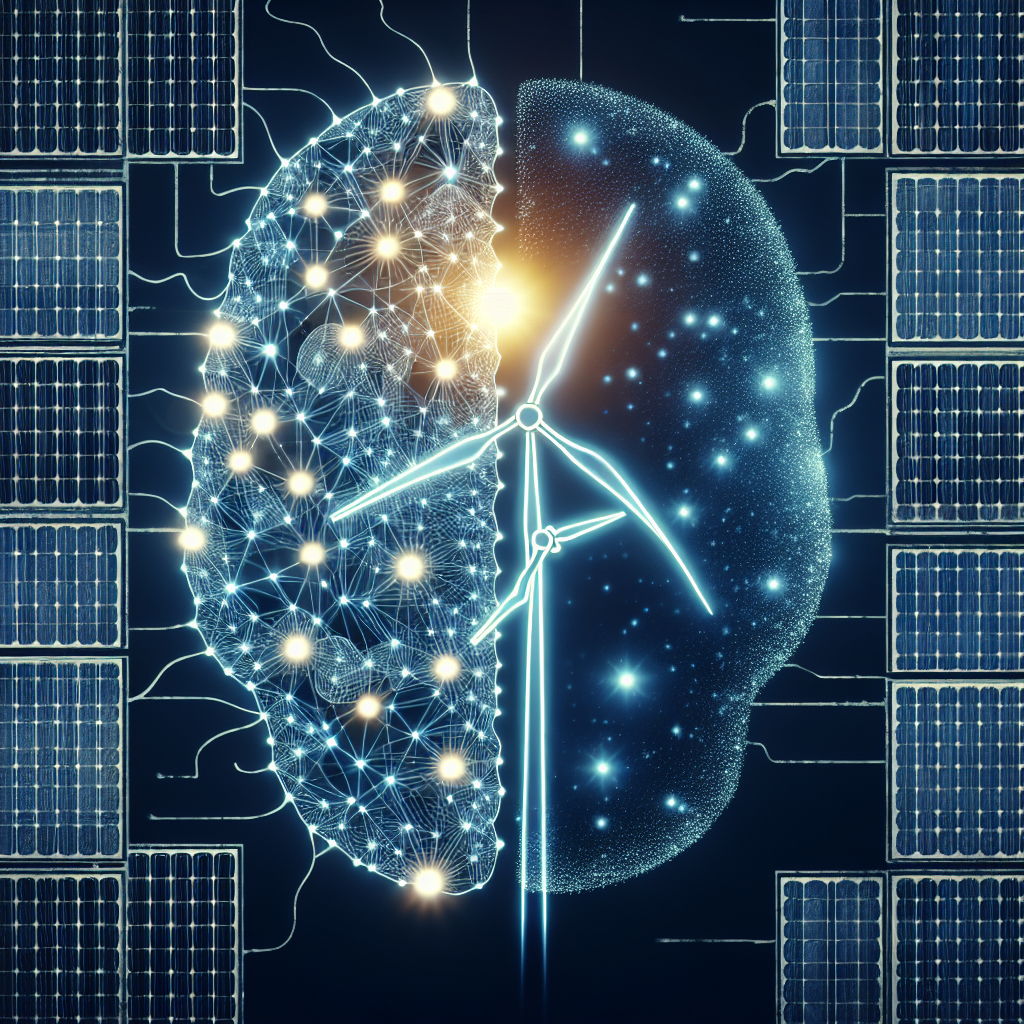Artificial intelligence (AI) and renewable energy are two rapidly evolving technologies that are reshaping the way we produce and consume energy. When combined, they form a powerful partnership that has the potential to revolutionize the energy sector and accelerate the transition to a sustainable, low-carbon future. In this article, we will explore how AI and renewable energy are a perfect match and how they are being used to drive innovation and efficiency in the energy industry.
AI is a technology that enables machines to learn from data, identify patterns, and make decisions without human intervention. It has the ability to analyze vast amounts of data in real-time, optimize complex systems, and predict future outcomes with a high degree of accuracy. In the context of renewable energy, AI can be used to optimize the performance of renewable energy systems, improve energy efficiency, and enable the integration of renewable energy sources into the grid.
One of the key applications of AI in renewable energy is in the optimization of renewable energy systems. AI algorithms can be used to predict energy production from renewable sources such as solar and wind, optimize the operation of renewable energy plants, and maximize energy output while minimizing costs. By analyzing real-time data on weather conditions, energy demand, and grid constraints, AI can help renewable energy plants operate more efficiently and increase their overall productivity.
Another key application of AI in renewable energy is in energy storage. Renewable energy sources like solar and wind are intermittent, meaning that their output fluctuates depending on factors like weather conditions and time of day. Energy storage technologies like batteries can help to store excess energy produced during periods of high output and release it when demand is high. AI can be used to optimize the operation of energy storage systems, predict energy demand, and manage the flow of energy in real-time to ensure a reliable and stable energy supply.
AI can also be used to optimize the design and placement of renewable energy systems. By analyzing data on factors like solar radiation, wind speed, and topography, AI algorithms can help to identify the most suitable locations for renewable energy installations and optimize the design of solar panels, wind turbines, and other renewable energy technologies to maximize energy production.
In addition to optimizing the performance of renewable energy systems, AI can also be used to improve energy efficiency in buildings, transportation, and industrial processes. AI-driven energy management systems can analyze energy consumption patterns, identify opportunities for energy savings, and automate energy-saving measures to reduce energy costs and carbon emissions. For example, AI can be used to optimize the operation of heating, ventilation, and air conditioning systems in buildings, reduce energy waste in manufacturing processes, and optimize the routing of transportation fleets to minimize fuel consumption.
The integration of AI and renewable energy is also driving innovation in the energy industry. Startups and technology companies are developing new AI-powered solutions to address the challenges of renewable energy integration, energy storage, and energy management. For example, companies like Google and DeepMind are using AI algorithms to optimize the operation of data centers, reduce energy consumption, and increase the use of renewable energy sources.
In the utility sector, AI is being used to improve grid stability, reduce energy losses, and enable the integration of renewable energy sources into the grid. AI-powered grid management systems can analyze vast amounts of data from sensors, meters, and other devices to predict energy demand, optimize the flow of electricity, and prevent blackouts. By using AI to optimize the operation of the grid, utilities can increase the reliability of the energy supply, reduce costs, and reduce carbon emissions.
Overall, the combination of AI and renewable energy is a perfect match that has the potential to transform the energy sector and accelerate the transition to a sustainable, low-carbon future. By leveraging the power of AI to optimize the performance of renewable energy systems, improve energy efficiency, and drive innovation in the energy industry, we can create a more sustainable and resilient energy system that meets the needs of the present and future generations.
FAQs:
1. How is AI being used to optimize the performance of renewable energy systems?
AI is being used to analyze real-time data on weather conditions, energy demand, and grid constraints to optimize the operation of renewable energy plants, maximize energy output, and minimize costs.
2. What are some examples of AI-powered solutions in the energy industry?
Examples of AI-powered solutions in the energy industry include AI-driven energy management systems in buildings, AI-powered grid management systems in utilities, and AI algorithms that optimize the operation of data centers.
3. How can AI improve energy efficiency in buildings and industrial processes?
AI can analyze energy consumption patterns, identify opportunities for energy savings, and automate energy-saving measures to reduce energy costs and carbon emissions in buildings and industrial processes.
4. How is AI being used to enable the integration of renewable energy sources into the grid?
AI-powered grid management systems can analyze data from sensors, meters, and other devices to predict energy demand, optimize the flow of electricity, and enable the integration of renewable energy sources into the grid.

